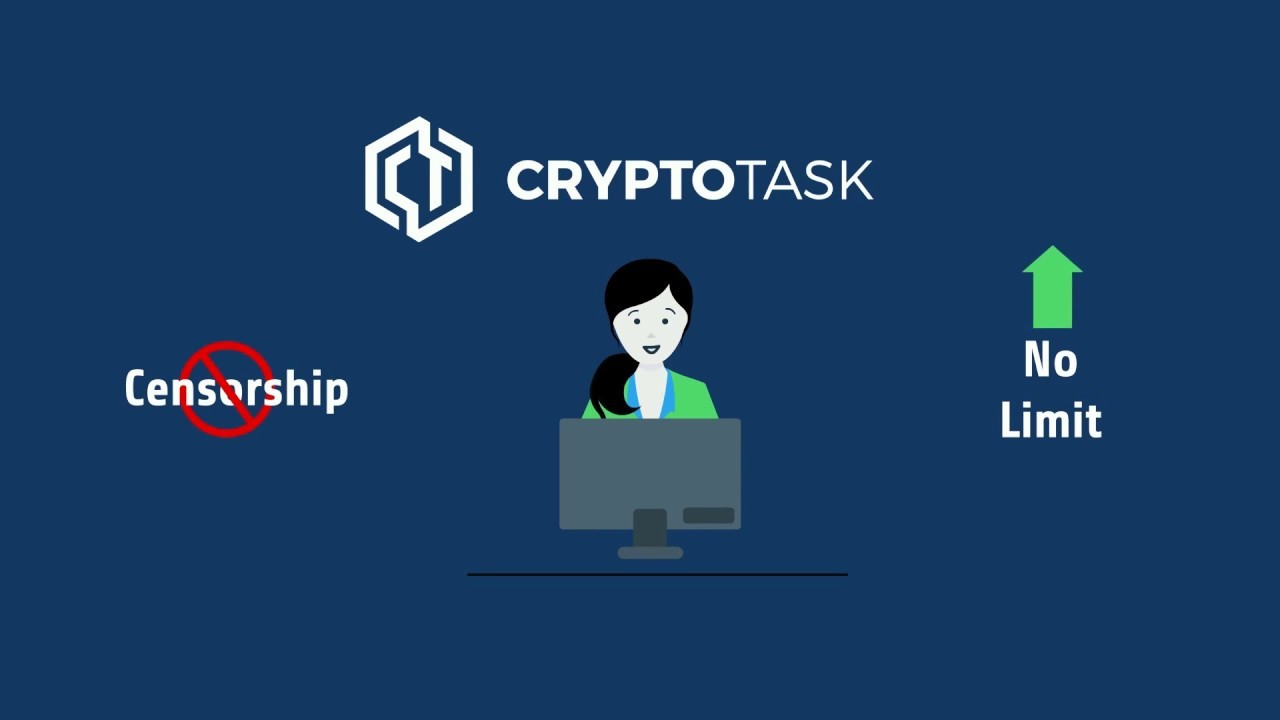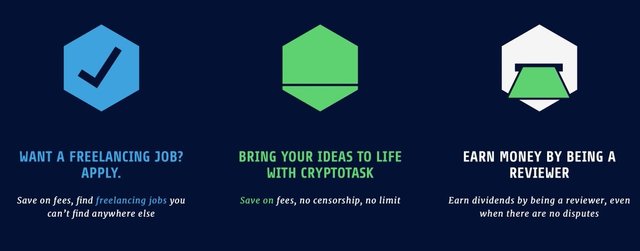Disrupting Freelance market using CryptoTask
Introduction
The freelance market is a growing platform in the US with freelancers making up 35% of the workforce which overall contributes to 1 trillion USD to the world economy. But there is a huge part of the market that is untapped and CryptoTask was started with the aim to bring in blockchain technology to take over the current freelancing market.
Website: https://www.cryptotask.org/
Our system consists of clients, freelancers and reviewers. Here, clients post job offers and freelancers apply for these. Reviewers work as stake-holders to put down a deposit. Reviewers define their expertise and get a percentage of each task value.
Also, the coin holders of CryptoTask get a small commission as a dividend. The freelancers put down 10% of the task that they have applied for. And if the task isn’t completed or if the deadline has already expired, the client gets a refund and the freelancer's deposit. In case of disputes, there are review panels that are available to handle any issues. We follow the system of nash equilibrium for the voting so that there is a fair workflow.
The dispute mechanism
At each block level, the reviewer encrypts each block with his private key. If this needs to be confirmed to anyone, the one can simply enter the encrypted value and obtain the matching key to see if the numbers are matched in the original block hash. We also have a breach mechanism in place to penalize anyone who tries to communicate off chain. This will result in the loss of deposit made by the offending party. The result that is provided by the
By using mathematical calculations involving probability, we have arrived at a solution where for a notable attack stake, the probability of getting more than 50% of review slots is low. From this, we have come up with a table that portrays the various probabilities for the attack of the review stakes.
In another case, if the attacker controls the mining power, through probability, we can decide whether to broadcast a mined block or not. This can be done in a pseudo-random manner where mined the block can know how many review panel slots he was given. But they do not know how many review slots were given to others. Hence, the attacker will try to find an optimal review slot which will not be broadcasted. Thus, when they mine a block, there are three possible outcomes: they will broadcast the block, not broadcast it and risk that honest miners will mine the next block or they will mine the next block again. And this system is followed throughout.
Conclusion
With our new system, the issues in the prediction markets and freelancing systems that are related to scalability are solved. This gives us a number of advantages such as lower fees, no censorship and other blockchain related advantages allowing us to leverage the other freelance economy. We predict that the commercial future of this market is massive, when we take into account the size of this freelancing community in the economy.
For more information Visit:
Website: https://www.cryptotask.org/
By: karanj
Btalk profile: https://bitcointalk.org/index.php?action=profile;u=1030341

